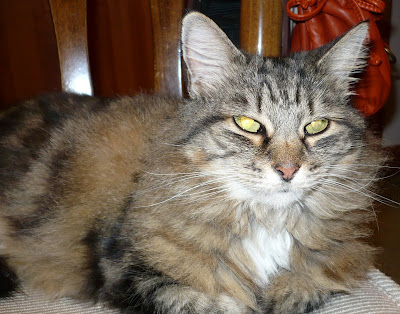
She dispelled the “temperamental mare” theory because she adored people, loved attention, and was a sweetie-pie through and through. So, as many of you alluded to in your replies to my November 17th post, there is that thing about mares being temperamental, but a lot of it comes down to personality.
I could tell when she was in heat, especially a strong heat in late spring because, if I let her, she’d stop in the barn aisle and pee in front of my gelding’s stall. Geez. But even with the hormonal flux, she was well-mannered, and she was always a willing mount. But most of all, she was a “people” horse.
Did I mention personality? She sure had plenty of that. She also had a thing for shoelaces. Don’t ask me why, but my kids would stand on the fence, and she’d be right there, nuzzling them and smelling them; then she’d tuck her velvety nose between the fence boards and play with their shoelaces, turning them a pasty green.
During the years that I owned her, I didn’t ride nearly as much as I would have liked, being busy with two small boys who were not into horses, preferring go-carts they could hotrod and put back in the barn minus the grooming and mucking out. When it was time for me to get out of horses, for various reasons, I knew I was making the right decision for Flare.

Unlike my kids, I loved the barn work part of horse ownership, so she got great care, but she wasn’t being ridden like she should have been. She wasn’t getting a whole bunch of attention either, since I wasn’t riding much. She needed . . . no, she deserved more attention. I was delighted when I found the perfect owner, a nine-year old young lady who was into 4-H and had two nine-year-old girlfriends.
Flare went to a trainer’s barn for a month before the girl’s mother bought her, and this is a story Flare’s trainer recounted.
She told me . . . the girls had come out to ride one afternoon, and they had Flare cross-tied in the barn aisle while they groomed her. Unbeknownst to the trainer, her non-horsey boyfriend had decided to work on the cement barn aisle. He pulled out a machine (don’t know what kind it was or the job it did, but it resembled the huge wax machines they use on the floors at Wal-Mart). He powered it up and was sweeping it back and forth across the aisle. When Flare’s trainer walked into the barn, there were the girls, fooling around with Flare, and there was her boyfriend, sweeping this huge machine across the floor right under Flare’s nose.
The mare didn’t move an inch. In fact, the machine seemed not to bother her at all. If they hadn’t known it before, I think that one incident was what sold everyone that Flare was the perfect mare for these girls.
So, let’s hear if for mares who are sweethearts!
Happy riding and reading everyone!
Kit
www.kitehrman.com



























.jpg)





.JPG)











.jpg)





